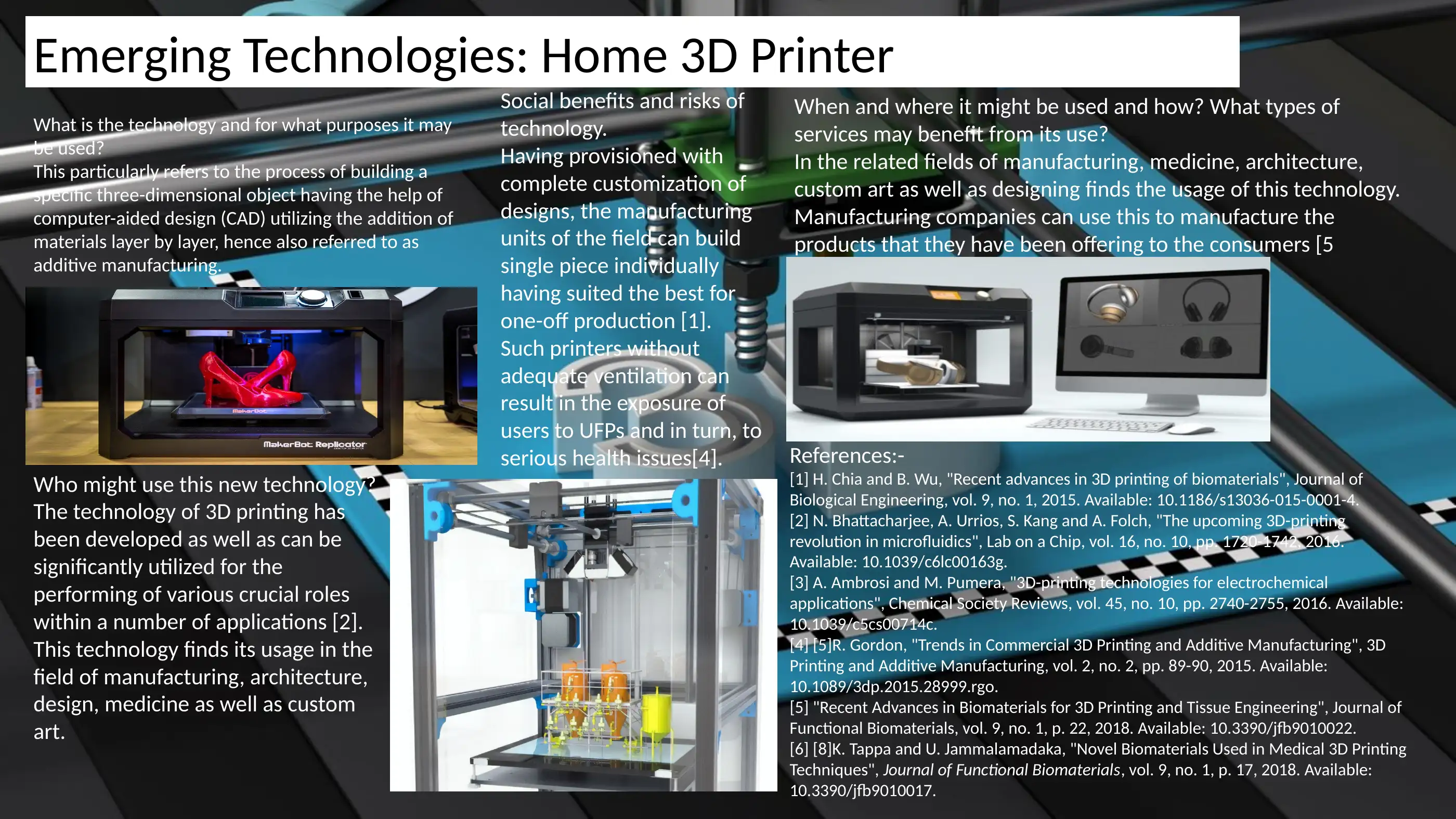Social Informatics - Emerging Technology: 3D Printer Summary
VerifiedAdded on 2022/10/17
|1
|497
|16
Homework Assignment
AI Summary
This assignment provides a summary of 3D printing technology, also known as additive manufacturing, which involves creating three-dimensional objects layer by layer using computer-aided design (CAD). The summary covers what 3D printing is, its various applications in manufacturing, architecture, design, medicine, and custom art. It also addresses who might use this technology and when and where it can be applied, highlighting the benefits it offers to different services. Furthermore, the assignment analyzes the social benefits and risks associated with 3D printing, such as customization in manufacturing and potential health risks from inadequate ventilation. The summary is presented in a graphical format, as requested in the assignment brief, and is supported by references to relevant research papers.







![[object Object]](/_next/static/media/star-bottom.7253800d.svg)